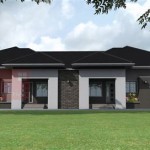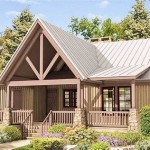Essential Aspects of Sthapatya Veda House Plans: A Comprehensive Guide
Sthapatya Veda is the ancient Indian science of architecture and town planning. It is based on the belief that buildings and towns should be designed in harmony with nature and the cosmos. Sthapatya Veda house plans are designed to promote health, well-being, and prosperity.
There are many essential aspects of Sthapatya Veda house plans. These include:
- Orientation: The orientation of the house is important in Sthapatya Veda. The house should be oriented to face the east or the north. This is because the east is associated with the sun and the north is associated with the moon. These directions are considered to be auspicious.
- Shape: The shape of the house is also important in Sthapatya Veda. The house should be a square or a rectangle. These shapes are considered to be stable and harmonious.
- Materials: The materials used to build the house are also important in Sthapatya Veda. The materials should be natural and sustainable. These materials include wood, stone, brick, and earth.
- Layout: The layout of the house is also important in Sthapatya Veda. The house should be designed so that the flow of energy is smooth and unobstructed. This means that the rooms should be arranged in a way that makes sense and that there should be no obstacles to the flow of energy.
- Vastu: Vastu is the ancient Indian science of architecture and design. Vastu principles are often used in Sthapatya Veda house plans. Vastu principles are based on the belief that the universe is made up of five elements: earth, water, fire, air, and ether. These elements are present in all things, including buildings. Vastu principles are used to design buildings that are in harmony with the five elements.
Sthapatya Veda house plans are designed to create a healthy, harmonious, and prosperous living environment. These plans are based on ancient principles that have been proven to work for centuries. If you are looking for a new home, you should consider a Sthapatya Veda house plan.
Here are some of the benefits of Sthapatya Veda house plans:
- Improved health: Sthapatya Veda house plans are designed to promote health and well-being. The plans include features that help to improve air quality, reduce stress, and promote relaxation.
- Increased prosperity: Sthapatya Veda house plans are designed to promote prosperity. The plans include features that help to attract wealth and abundance.
- Enhanced beauty: Sthapatya Veda house plans are designed to be beautiful. The plans include features that enhance the aesthetic appeal of the home.
If you are looking for a new home that is healthy, harmonious, and prosperous, you should consider a Sthapatya Veda house plan.

Sthapatya Veda

Vedic Architecture Maharishi Ayurveda Health Centre Bad Ems

Wiki Blog Architekwiki

Sthapatya Veda Vedic Architecture In Harmony With Natural Law World Peace

Building Architecture Of Sthāpatya Veda Free Colaboratory

Sthapatya Ved Vastu Sastra Ideal Homes Colony And Town Planning Exotic Art

Architecture 1

Sthapatya Veda The Environmentally Friendly Art Of Architecture Sanskriti Hinduism And N Culture Website

Secret Of Vaastu Part 2 Traditional House Plans N Vastu

Principles Of Maharishi Vastu Architecture








